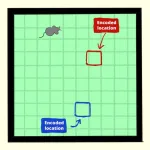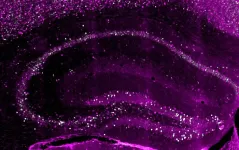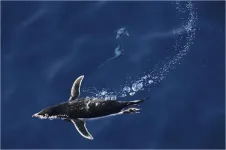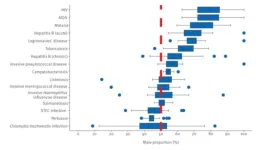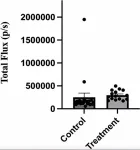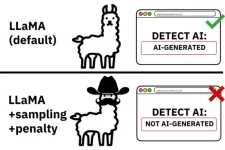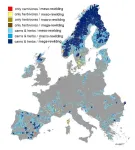(Press-News.org) ITHACA, N.Y. – While everyone knows that a good night’s sleep restores energy, a new Cornell University study finds it resets another vital function: memory.
Learning or experiencing new things activates neurons in the hippocampus, a region of the brain vital for memory. Later, while we sleep, those same neurons repeat the same pattern of activity, which is how the brain consolidates those memories that are then stored in a large area called the cortex. But how is it that we can keep learning new things for a lifetime without using up all of our neurons?
A new study, “A Hippocampal Circuit Mechanism to Balance Memory Reactivation During Sleep,” under embargo until 2pm ET on August 15 in Science, finds at certain times during deep sleep, certain parts of the hippocampus go silent, allowing those neurons to reset.
“This mechanism could allow the brain to reuse the same resources, the same neurons, for new learning the next day,” said Azahara Oliva, assistant professor of neurobiology and behavior and the paper’s corresponding author.
The hippocampus is divided into three regions: CA1, CA2 and CA3. CA1 and CA3 are involved in encoding memories related to time and space and are well-studied; less is known about CA2, which the current study found generates this silencing and resetting of the hippocampus during sleep.
The researchers implanted electrodes in the hippocampi of mice, which allowed them to record neuronal activity during learning and sleep. In this way, they could observe that, during sleep, the neurons in the CA1 and CA3 areas reproduce the same neuronal patterns that developed during learning in the day. But the researchers wanted to know how the brain continues learning each day without overloading or running out of neurons.
“We realized there are other hippocampal states that happen during sleep where everything is silenced,” Oliva said. “The CA1 and CA3 regions that had been very active were suddenly quiet. It’s a reset of memory, and this state is generated by the middle region, CA2.”
Cells called pyramidal neurons are thought to be the active neurons that matter for functional purposes, such as learning. Another type of cell, called interneurons, has different subtypes. The researchers discovered that the brain has parallel circuits regulated by these two types of interneurons – one that regulates memory, the other that allows for resetting of memories.
The researchers believe they now have the tools to boost memory, by tinkering with the mechanisms of memory consolidation, which could be applied when memory function falters, such as in Alzheimer’s disease. Importantly, they also have evidence for exploring ways to erase negative or traumatic memories, which may then help treat conditions such as post-traumatic stress disorder.
The result helps explain why all animals require sleep, not only to fix memories, but also to reset the brain and keep it working during waking hours. “We show that memory is a dynamic process,” Oliva said.
The study was funded by the National Institutes of Health, a Sloan Fellowship, a Whitehall Research Grant, a Klingenstein-Simons Fellowship and a New Frontiers Grant.
Cornell University has dedicated television and audio studios available for media interviews.
-30-
END
Sleep resets neurons for new memories the next day
2024-08-15
ELSE PRESS RELEASES FROM THIS DATE:
Navigating the future: brain cells that plan where to go
2024-08-15
Researchers from the RIKEN Center for Brain Science (CBS) in Japan have discovered a region of the brain that encodes where an animal is planning to be in the near future. Linked to internal maps of spatial locations and past movements, activity in the newly discovered grid cells accurately predicts future locations as an animal travels around its environment. Published in Science on August 15, the study helps explain how planned spatial navigation is possible.
It might seem effortless, but navigating the world requires quite a bit of under-the-hood brain activity. For ...
The brain creates three copies for a single memory
2024-08-15
The ability to turn experiences into memories allows us to learn from the past and use what we learned as a model to respond appropriately to new situations. For this reason, as the world around us changes, this memory model cannot simply be a fixed archive of the good old days. Rather, it must be dynamic, changing over time and adapting to new circumstances to better help us predict the future and select the best course of action. How the brain could regulate a memory’s dynamics was a mystery – until multiple memory copies ...
Breakthrough addresses sex-related weight gain and disease
2024-08-15
ITHACA, N.Y. -- A decline in estrogen during menopause causes changes in body fat distribution and associated cardiovascular and metabolic disease, but a new study identifies potential therapies that might one day reverse these unhealthy shifts.
The study, “Cxcr4 Regulates a Pool of Adipocyte Progenitors and Contributes to Adiposity in a Sex-Dependent Manner,” was published Aug. 5 in Nature Communications.
The researchers discovered that a receptor called Cxcr4, when blocked in mice, reduced the tendency of fat stem cells to develop into white fat, also called white adipose tissue. This treatment could potentially be combined with low doses of estrogen therapy to cut ...
As human activities expand in Antarctica, scientists identify crucial conservation sites
2024-08-15
A team of scientists led by the University of Colorado Boulder has identified 30 new areas critical for conserving biodiversity in the Southern Ocean surrounding Antarctica. In a study published Aug. 15 in the journal Conservation Biology, the researchers warn that without greater protection to limit human activities in these areas, native wildlife could face significant population declines.
“Many animals are only found in the Southern Ocean, and they all play an important role in its ecosystem,” said Cassandra Brooks, the paper’s senior author and associate professor in the Department of Environmental Studies and a fellow of the ...
Solutions to Nigeria’s newborn mortality rate might lie in existing innovations, finds review
2024-08-15
The review, led by Imperial College London’s Professor Hippolite Amadi, argues that Nigeria’s own discoveries and technological advancements of the past three decades have been “abandoned” by policymakers.
The authors argue that too many Nigerian newborns, clinically defined as infants in the first 28 days of life, die of causes that could have been prevented had policymakers adopted recent in-country scientific breakthroughs.
Led by Professor Amadi of Imperial’s Department of Bioengineering, who received the Nigeria Prize ...
Study highlights sex differences in notified infectious disease cases across Europe
2024-08-15
A study published in Eurosurveillance analysing 5.5 million cases of infectious diseases in the European Union/European Economic Area (EU/EEA) over 10 years has found important differences in the relative proportion of notified male versus female cases for several diseases. The proportion of males ranged on average from 40-45% for pertussis and Shiga toxin-producing Escherischia coli (STEC) infections to 75-80% for HIV/AIDS.
“Although this study was not able to fully explain the differences observed across countries and diseases, it offers some interesting leads,” said Julien Beauté, principal expert in general surveillance at the European ...
Nanobody inhibits metastasis of breast tumor cells to lung in mice
2024-08-15
“In the present study we describe the development of an inhibitory nanobody directed against an extracellular epitope present in the native V-ATPase c subunit.”
BUFFALO, NY- August 15, 2024 – A new research paper was published in Oncotarget's Volume 15 on August 14, 2024, entitled, “A nanobody against the V-ATPase c subunit inhibits metastasis of 4T1-12B breast tumor cells to lung in mice.”
The vacuolar H+-ATPase (V-ATPase) is an ATP-dependent proton pump that functions to control the pH of intracellular compartments ...
Detecting machine-generated text: An arms race with the advancements of large language models
2024-08-15
Machine-generated text has been fooling humans for the last four years. Since the release of GPT-2 in 2019, large language model (LLM) tools have gotten progressively better at crafting stories, news articles, student essays and more, to the point that humans are often unable to recognize when they are reading text produced by an algorithm. While these LLMs are being used to save time and even boost creativity in ideating and writing, their power can lead to misuse and harmful outcomes, which are already ...
Nearly 25% of European landscape could be rewilded
2024-08-15
Europe's abandoned farmlands could find new life through rewilding, a movement to restore ravaged landscapes to their wilderness before human intervention. A quarter of the European continent, 117 million hectares, is primed with rewilding opportunities, researchers report August 15 in the Cell Press journal Current Biology. They provide a roadmap for countries to meet the 2030 European Biodiversity Strategy's goals to protect 30% of land, with 10% of those areas strictly under conservation.
The team ...
Emergency departments could help reduce youth suicide risk
2024-08-15
A study of over 15,000 youth with self-inflicted injury treated in Emergency Departments (EDs) found that around 25 percent were seen in the ED within 90 days before or 90 days after injury, pointing to an opportunity for ED-based interventions, such as suicide risk screening, safety planning, and linkage to services. Nearly half of ED visits after the self-inflicted injury encounter were for mental health issues.
“Self-inflicted injury is an important predictor of suicide risk,” said Samaa Kemal, MD, MPH, emergency medicine physician at Ann & Robert H. Lurie ...
